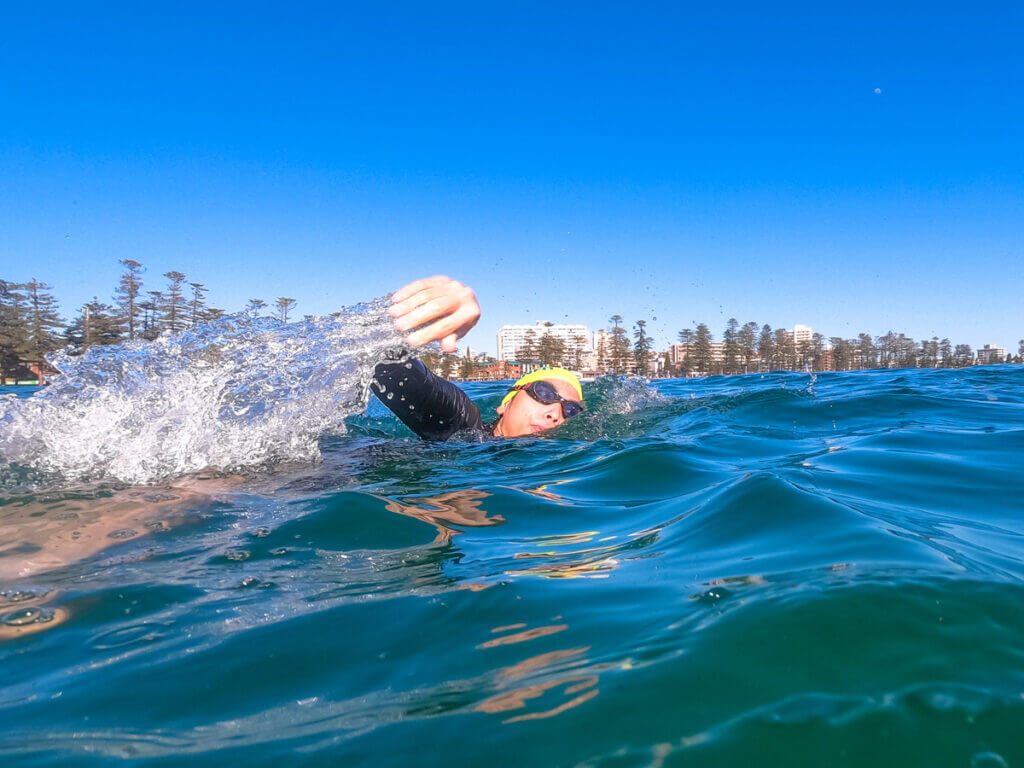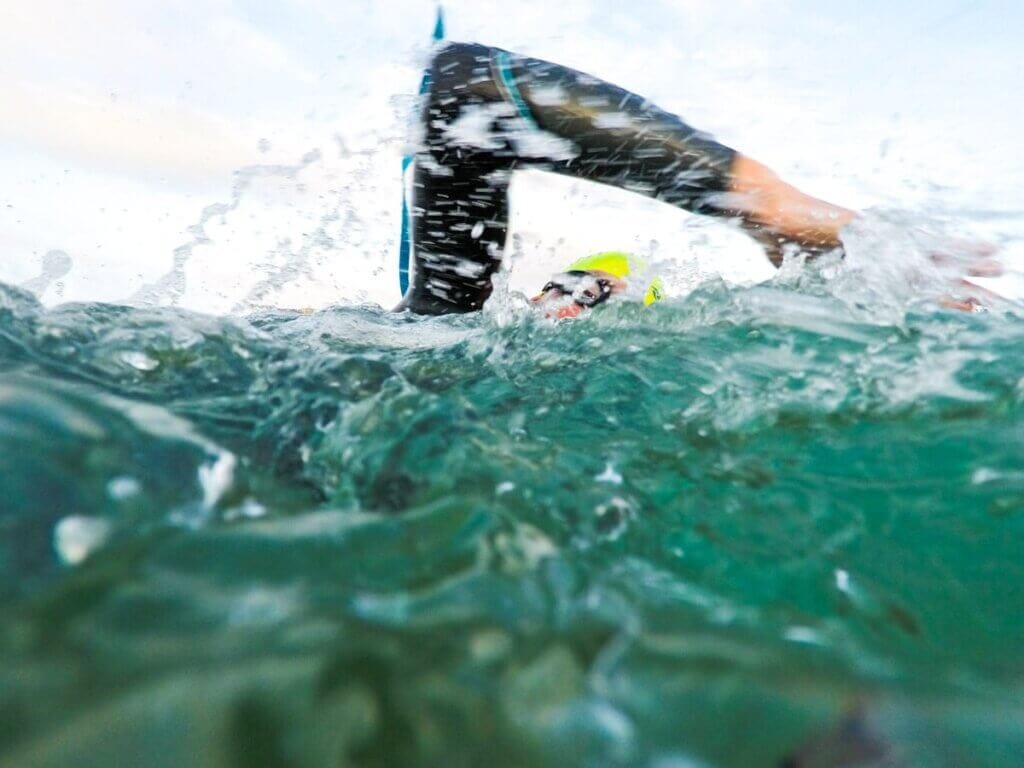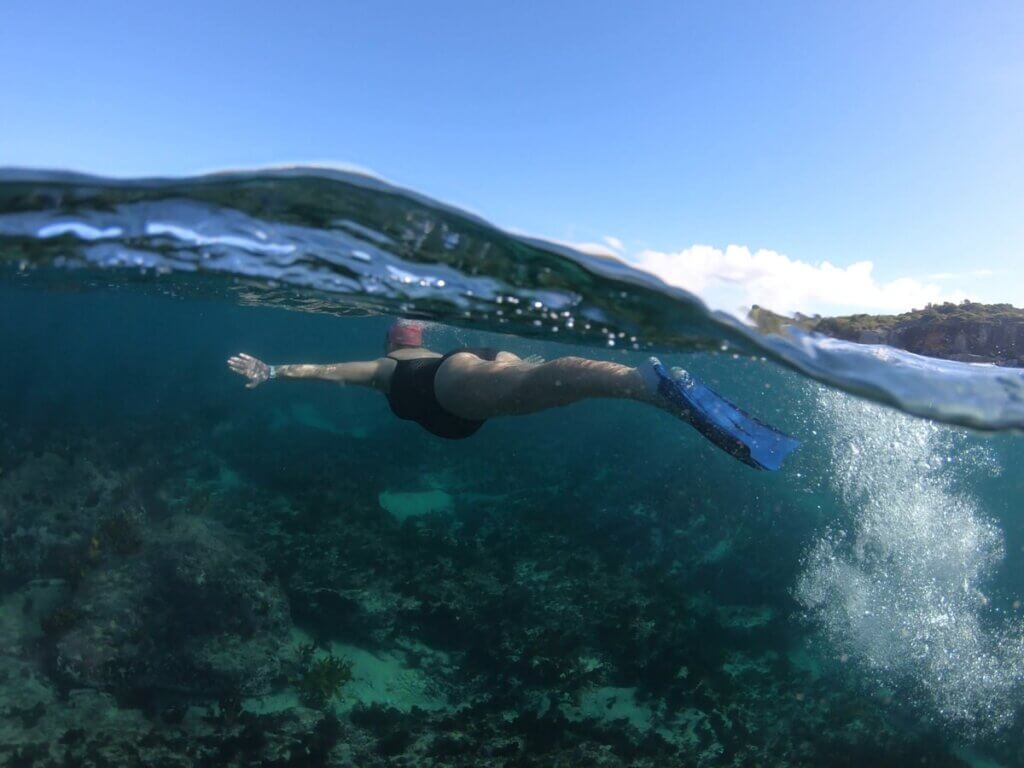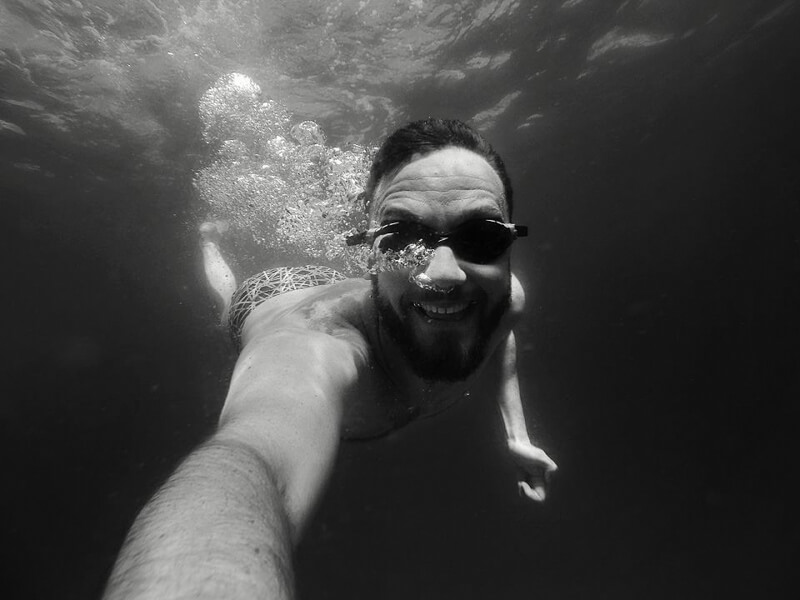How to adapt your breathing for open water swimming

It’s something you do subconsciously, and even though you do it 20,000 times a day, you hardly know you’re doing it.
It’s the act of simply breathing in, and then breathing out.
On land, it’s fairly uneventful, but once we start swimming, it requires a lot more focus and it plays a huge role in our swimming efficiency and confidence in the water.
When we move from the pool to the open water, our primary goal is to maintain our efficient swimming technique, including our relaxed breathing rhythm.
Most importantly, we need to continue with a neutral head position, when the instinct can be to lift our head up, even so slightly, the whole time we’re swimming (we have sighting to help see where we’re going).
However, there are times when swimming in open water when we’ll need to modify our breathing frequency and side in order to adapt to the dynamic environment we find ourselves in.
Here are some common situations where you might like to adapt your breathing:
When starting your swim
Particularly at the start of an event, but also when you’re first hitting the water for a social swim, any heightened anxiety and/or cool water will increase your breathing rate. If you usually breathe every 3/4/5/6 strokes, start by breathing every 2nd to get your breathing regulated, then switch to your preferred stroke count.
When swimming out through the surf
Breathe every second stroke to give yourself the chance to keep your lungs full of oxygen, which you can call on at a moment’s notice to dive under waves. Also, the more often you breathe, the more often you can sight, and you want as much notice about approaching waves as possible to get your timing right.
When swimming with sun glare
When swimming at sunrise or sunset, when the sun is low, consider breathing away from the sun. Not only does it save your eyes, it’ll increase your visibility across the water surface. This is particularly important when swimming back through the surf and you’re looking behind for waves.
When swimming in the wind and chop
When the wind is up and the water surface is choppy, breathe away from the wind. Your head will create a lee which will be calmer to breathe in.
When swimming point to point
All the best things to see on a swim are either under the water or on the land. If you’re swimming along the coast, breathe towards the shore to take in the sights – after all, there’s not much to see out to sea.
When swimming along the beach
As you swim parallel to the shore, out the back behind the waves, look out on both sides by breathing bilaterally. Breathe out to sea to check for approaching swell and breaking waves, and towards the wave zone for distance reference points on the land and to check you’re not drifting too far out.





Responses